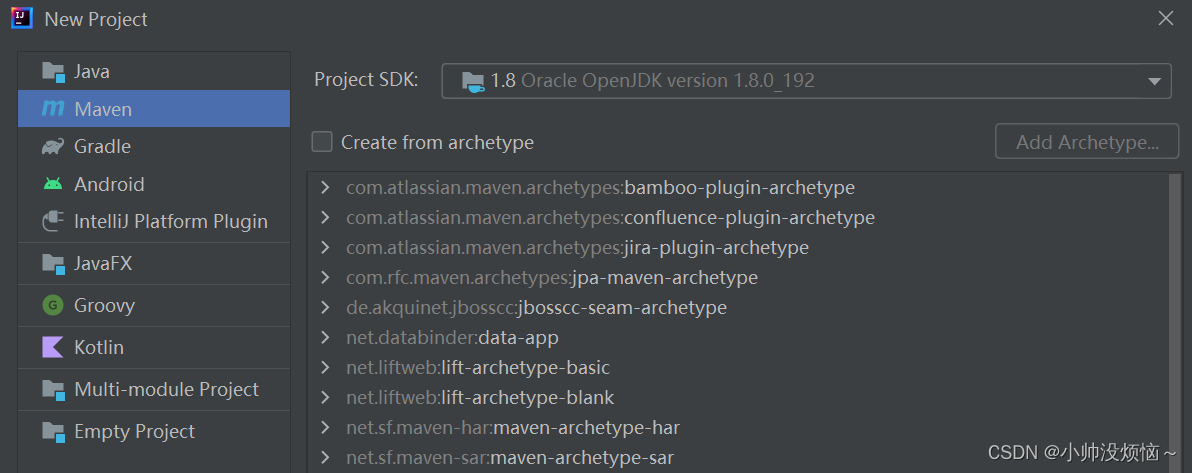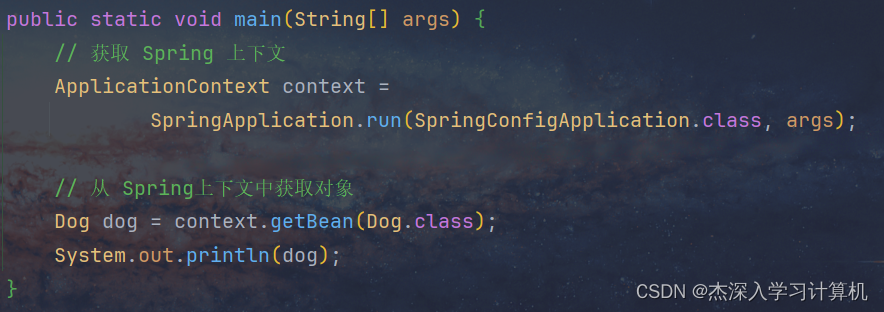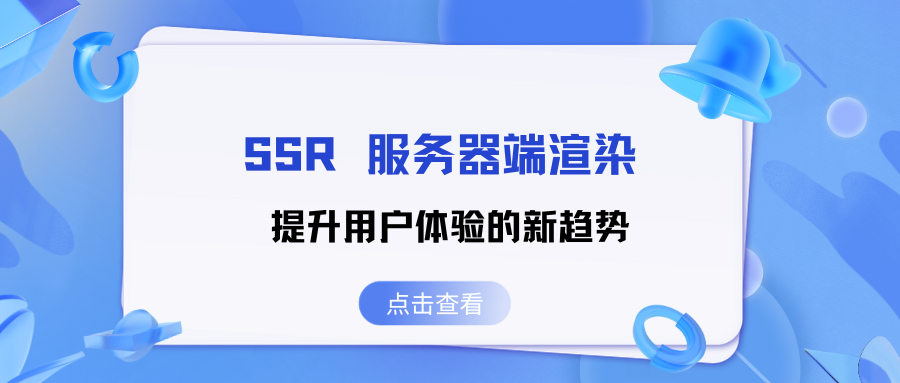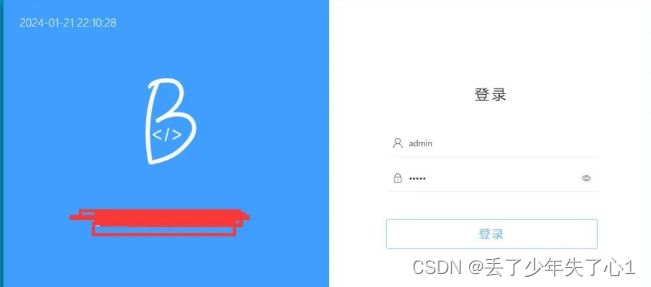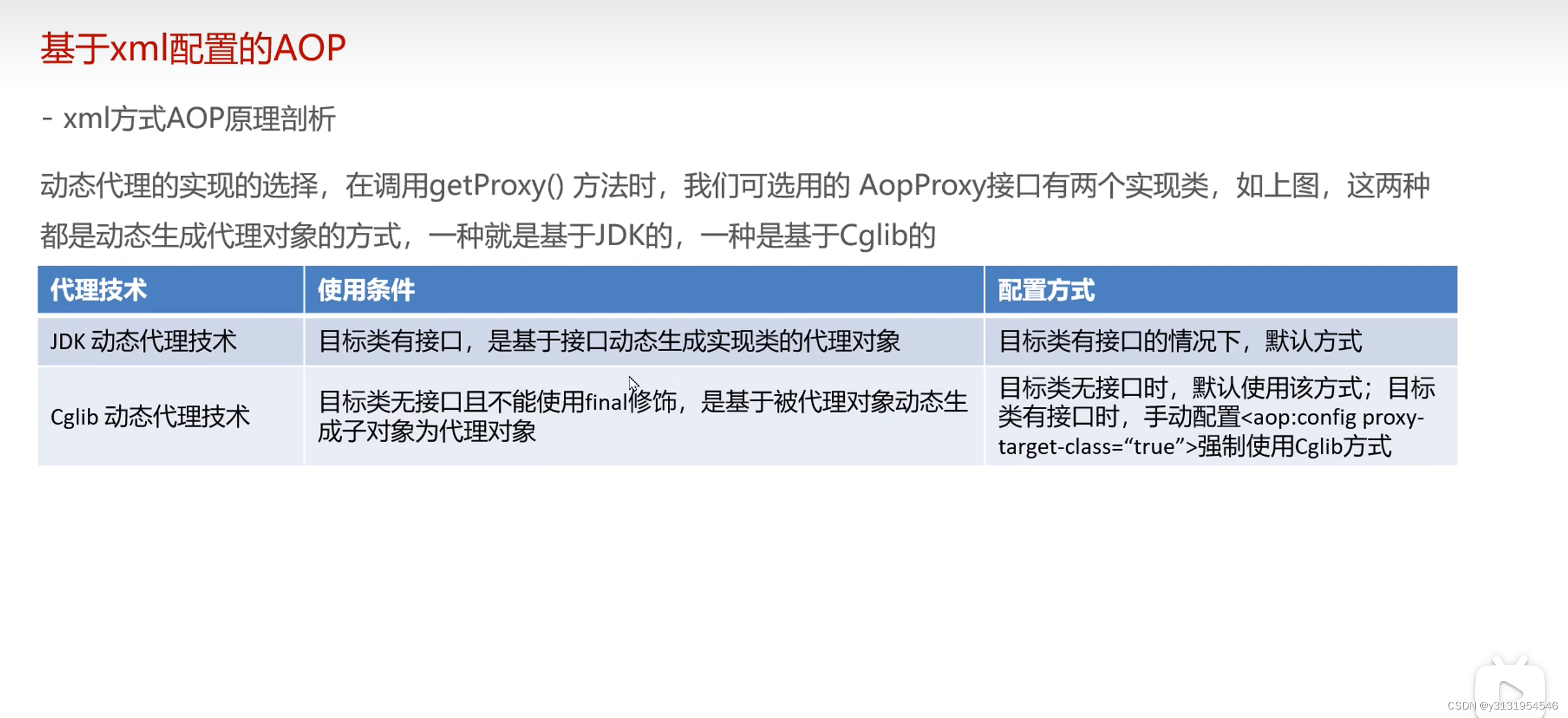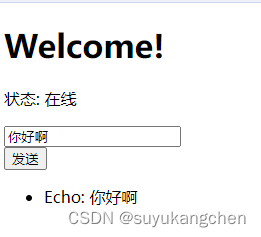SpringFactoriesLoader
Spring工厂加载器,用于将META-INFO/spring.factories文件下的相关接口的实现按照K、V形式加载到内存中,一个接口的多个实现按照“,”分割。如下图所示,SpringFactoriesLoader会将spring.factories中的加载器、监听器、初始化器、后置处理器、配置类等进行加载。我们也可以自定义starter,在spring.factories文件中定义自己的内容。
# PropertySource Loaders
org.springframework.boot.env.PropertySourceLoader=
org.springframework.boot.env.PropertiesPropertySourceLoader,
org.springframework.boot.env.YamlPropertySourceLoader
# Run Listeners
org.springframework.boot.SpringApplicationRunListener=
org.springframework.boot.context.event.EventPublishingRunListener
# Application Context Initializers
org.springframework.context.ApplicationContextInitializer=
org.springframework.boot.context.ConfigurationWarningsApplicationContextInitializer,
org.springframework.boot.context.ContextIdApplicationContextInitializer,
org.springframework.boot.context.config.DelegatingApplicationContextInitializer,
org.springframework.boot.context.embedded.ServerPortInfoApplicationContextInitializer
# Application Listeners
org.springframework.context.ApplicationListener=
org.springframework.boot.ClearCachesApplicationListener,
org.springframework.boot.builder.ParentContextCloserApplicationListener,
org.springframework.boot.context.FileEncodingApplicationListener,
org.springframework.boot.context.config.AnsiOutputApplicationListener,
org.springframework.boot.context.config.ConfigFileApplicationListener,
org.springframework.boot.context.config.DelegatingApplicationListener,
org.springframework.boot.liquibase.LiquibaseServiceLocatorApplicationListener,
org.springframework.boot.logging.ClasspathLoggingApplicationListener,
org.springframework.boot.logging.LoggingApplicationListener
# Environment Post Processors
org.springframework.boot.env.EnvironmentPostProcessor=
org.springframework.boot.cloud.CloudFoundryVcapEnvironmentPostProcessor,
org.springframework.boot.env.SpringApplicationJsonEnvironmentPostProcessor
# Failure Analyzers
org.springframework.boot.diagnostics.FailureAnalyzer=
org.springframework.boot.diagnostics.analyzer.BeanCurrentlyInCreationFailureAnalyzer,
org.springframework.boot.diagnostics.analyzer.BeanNotOfRequiredTypeFailureAnalyzer,
org.springframework.boot.diagnostics.analyzer.BindFailureAnalyzer,
org.springframework.boot.diagnostics.analyzer.ConnectorStartFailureAnalyzer,
org.springframework.boot.diagnostics.analyzer.NoSuchMethodFailureAnalyzer,
org.springframework.boot.diagnostics.analyzer.NoUniqueBeanDefinitionFailureAnalyzer,
org.springframework.boot.diagnostics.analyzer.PortInUseFailureAnalyzer,
org.springframework.boot.diagnostics.analyzer.ValidationExceptionFailureAnalyzer
# FailureAnalysisReporters
org.springframework.boot.diagnostics.FailureAnalysisReporter=
org.springframework.boot.diagnostics.LoggingFailureAnalysisReporter
我们用SpringApplication的初始化过程来讲解SpringFactoriesLoader
SpringApplication(Object… sources)
SpringApplication的构造方法,创建一个Spring应用实例
public SpringApplication(Object... sources) {
initialize(sources);
}
initialize()
在初始化方法中,设置初始化器时,获取SpringFactories实例
private void initialize(Object[] sources) {
if (sources != null && sources.length > 0) {
this.sources.addAll(Arrays.asList(sources));
}
this.webEnvironment = deduceWebEnvironment();
// 设置初始化器
setInitializers((Collection) getSpringFactoriesInstances(ApplicationContextInitializer.class));
setListeners((Collection) getSpringFactoriesInstances(ApplicationListener.class));
this.mainApplicationClass = deduceMainApplicationClass();
}
private <T> Collection<? extends T> getSpringFactoriesInstances(Class<T> type) {
return getSpringFactoriesInstances(type, new Class<?>[] {});
}
getSpringFactoriesInstances()
获取类加载器–>加载工厂名称集合–>加载Spring工厂实例集合–>排序
private <T> Collection<? extends T> getSpringFactoriesInstances(Class<T> type, Class<?>[] parameterTypes,
Object... args) {
ClassLoader classLoader = Thread.currentThread().getContextClassLoader();
// Use names and ensure unique to protect against duplicates
Set<String> names = new LinkedHashSet<String>(SpringFactoriesLoader.loadFactoryNames(type, classLoader));
List<T> instances = createSpringFactoriesInstances(type, parameterTypes, classLoader, args, names);
AnnotationAwareOrderComparator.sort(instances);
return instances;
}
loadFactoryNames()
去META-INFO/spring.factories中读取相关接口实现信息,并返回
public static final String FACTORIES_RESOURCE_LOCATION = "META-INF/spring.factories";
public static List<String> loadFactoryNames(Class<?> factoryClass, ClassLoader classLoader) {
String factoryClassName = factoryClass.getName();
try {
// 根据类加载器判断如何获取资源,若加载器不为null,则走getResources(),若为null,则走getSystemResources()
Enumeration<URL> urls = (classLoader != null ? classLoader.getResources(FACTORIES_RESOURCE_LOCATION) :
ClassLoader.getSystemResources(FACTORIES_RESOURCE_LOCATION));
List<String> result = new ArrayList<String>();
while (urls.hasMoreElements()) {
URL url = urls.nextElement();
// 根据资源路径加载资源
Properties properties = PropertiesLoaderUtils.loadProperties(new UrlResource(url));
// 获取KV中的值(接口的实现)
String propertyValue = properties.getProperty(factoryClassName);
for (String factoryName : StringUtils.commaDelimitedListToStringArray(propertyValue)) {
result.add(factoryName.trim());
}
}
return result;
}
catch (IOException ex) {
throw new IllegalArgumentException("Unable to load factories from location [" +
FACTORIES_RESOURCE_LOCATION + "]", ex);
}
}
getResources()和getSystemResources()的区别
ClassLoader.getResource():这个方法会首先在相对于调用类的路径下查找资源。如果在类路径下没有找到,那么就会在系统类加载器路径下查找。这意味着如果你有一个特定的类加载器,并且你希望它只查找它自己的类路径,那么你应该使用getResource()。ClassLoader.getSystemResource():这个方法会直接在系统类加载器路径下查找资源。这意味着它将查找所有类加载器都可以访问的资源,包括那些由Java运行时环境提供的资源。因此,如果你正在查找一个在所有类加载器路径下都存在的资源,你应该使用getSystemResource()。
createSpringFactoriesInstances()
创建SpringFactories实例,也就是创建监听器、初始化器、配置类等的实例。
private <T> List<T> createSpringFactoriesInstances(Class<T> type, Class<?>[] parameterTypes,
ClassLoader classLoader, Object[] args, Set<String> names) {
List<T> instances = new ArrayList<T>(names.size());
for (String name : names) {
try {
// 使用全路径类名创建对应的类
Class<?> instanceClass = ClassUtils.forName(name, classLoader);
Assert.isAssignable(type, instanceClass);
// 获取有参构造方法对象
Constructor<?> constructor = instanceClass.getDeclaredConstructor(parameterTypes);
// 返回一个instance
T instance = (T) BeanUtils.instantiateClass(constructor, args);
instances.add(instance);
}
catch (Throwable ex) {
throw new IllegalArgumentException("Cannot instantiate " + type + " : " + name, ex);
}
}
return instances;
}
总结:SpringFactoriesLoader会读取META-INFO/spring.factories文件下的接口实现类信息并将其进行实例化加载到内存中。这些类可能是监听器、初始化器、自动配置类以及后置处理器等。我们也可以自定义这些类,编写自己的META-INFO/spring.factories。
原文地址:https://blog.csdn.net/weixin_52457624/article/details/134750158
本文来自互联网用户投稿,该文观点仅代表作者本人,不代表本站立场。本站仅提供信息存储空间服务,不拥有所有权,不承担相关法律责任。
如若转载,请注明出处:http://www.7code.cn/show_27028.html
如若内容造成侵权/违法违规/事实不符,请联系代码007邮箱:suwngjj01@126.com进行投诉反馈,一经查实,立即删除!

